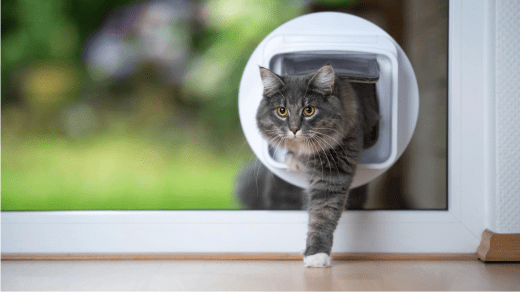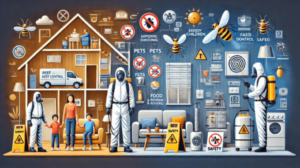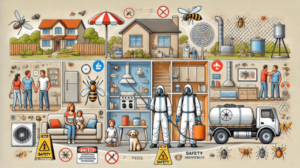
Cat Flaps
Cats are independent and curious creatures, often yearning to explore the great outdoors. However, as responsible pet owners, we also want to ensure their safety and well-being. This is where cat flaps come into play. Cat flaps, also known as cat doors, are small openings in doors or walls that allow cats to move freely between the indoors and outdoors. In this article, we will delve into the benefits of cat flaps, different types available, installation process, and important considerations to keep in mind.
How Do Cat Flaps Work?
Cat flaps consist of a small opening that allows cats to pass through while remaining closed for other animals or intruders. They often utilize a flexible flap made of durable material, such as plastic or rubber, which cats can easily push open with their paws. The flap then automatically swings back into place, sealing the opening and preventing drafts or unwanted entry.
Benefits of Cat Flaps
Cat flaps offer several advantages for both cats and their owners. Firstly, they provide cats with the freedom to come and go as they please, satisfying their natural instincts to explore and hunt. This can lead to increased mental and physical stimulation, resulting in happier and healthier feline companions. Additionally, cat flaps alleviate the need for owners to constantly open doors for their cats, allowing for a more convenient and hassle-free lifestyle.
Types of Cat Flaps
There are various types of cat flaps available in the market today, catering to different preferences and needs. Let’s explore some of the most common types:
Manual Cat Flaps
Manual cat flaps are the simplest and most affordable option. They rely on the cat’s own strength to push open the flap and enter or exit the house. While these flaps are basic in design, they still offer convenience and control over your cat’s movements.
Electronic Cat Flaps
Electronic cat flaps add an extra layer of security and control. These flaps are activated by a wearable collar tag or microchip implanted in the cat’s body. When the cat approaches the cat flap, the sensor recognizes the tag or microchip and unlocks the flap, allowing the cat to pass through. This technology prevents other animals from entering and provides a secure solution.
Microchip Cat Flaps
Microchip cat flaps operate similarly to electronic cat flaps but eliminate the need for an additional collar tag. The cat’s existing microchip, which is commonly inserted for identification purposes, is used to trigger the unlocking mechanism. This ensures seamless access for your cat without the hassle of attaching or replacing collar tags.
Choosing the Right Cat Flap
When selecting a cat flap, it is crucial to consider various factors to meet your cat’s specific needs and ensure optimal functionality. Here are some key considerations:
Size and Design
Cat flaps come in different sizes to accommodate cats of various breeds and sizes. It’s essential to choose a size that allows your cat to pass through comfortably without any restrictions. Additionally, consider the design that best complements your home’s aesthetics.
Security Features
If security is a concern, opt for cat flaps with advanced locking mechanisms or those that only respond to your cat’s unique microchip. These features prevent unwanted animals or strays from entering your home.
Weatherproofing
Ensure that the cat flap you choose has excellent weatherproofing capabilities. It should withstand rain, wind, and extreme temperatures, keeping your home insulated and dry.
Energy Efficiency
Look for cat flaps with energy-efficient designs, such as those with magnetic or insulated flaps. These features help maintain indoor temperature and minimize heat loss during colder months.
Installing a Cat Flap
Tools and Materials Needed
Before installing a cat flap, gather the following tools and materials:
- Cat flap kit (including flap, frame, and fixings)
- Measuring tape
- Pencil
- Screwdriver or drill
- Jigsaw (if cutting through walls or doors)
- Sandpaper (if required for smoothing edges)
Step-by-Step Installation Guide
- Select the ideal location for your cat flap. Consider a spot that is easily accessible for your cat and doesn’t obstruct foot traffic or furniture.
- Measure your cat to determine the appropriate height for the cat flap. Position the flap at a height that allows your cat to enter and exit comfortably.
- Using a pencil, outline the dimensions of the cat flap on the door or wall.
- If necessary, use a jigsaw to cut through the door or wall according to the outlined dimensions. Take caution and wear protective gear when operating power tools.
- Smooth any rough edges using sandpaper to ensure the cat flap fits securely and doesn’t cause any harm to your cat.
- Assemble the cat flap according to the manufacturer’s instructions, ensuring a snug fit.
- Attach the cat flap to the door or wall using the provided fixings, typically screws.
- Test the cat flap to ensure it opens and closes smoothly. Adjust the tightness of the screws if necessary.
- Allow your cat to familiarize itself with the cat flap and encourage its usage through positive reinforcement.
Training Your Cat to Use a Cat Flap
Introducing the Cat Flap
Introducing your cat to the cat flap requires patience and positive reinforcement. Begin by propping the flap open, allowing your cat to explore the opening freely. Gradually, encourage your cat to push the flap using treats or toys, rewarding them for their efforts.
Positive Reinforcement
Whenever your cat successfully uses the cat flap, reward them with praise, treats, or playtime. This positive reinforcement will help reinforce the connection between the cat flap and a positive experience, motivating your cat to use it consistently.
Maintaining Your Cat Flap
Regular maintenance ensures the longevity and functionality of your cat flap. Here are some essential maintenance tips:
Regular Cleaning
Clean the cat flap periodically to remove any dirt, debris, or fur that may accumulate. Use a mild detergent and warm water to wipe down the flap and frame. Avoid using harsh chemicals or abrasive materials that could damage the cat flap.
Checking for Damage
Inspect the cat flap regularly for signs of wear or damage. Check the hinges, locking mechanism, and overall structure for any loose screws or cracks. Address any issues promptly to maintain the cat flap’s effectiveness and security.
Addressing Common Concerns
Can Other Animals Enter Through the Cat Flap?
Cat flaps with advanced security features, such as microchip recognition or selective access, prevent other animals from entering your home. These features ensure that only your cat can use the cat flap while keeping intruders at bay.
Will the Cat Flap Affect Home Security?
Modern cat flaps are designed to maintain home security. With advanced locking mechanisms and sturdy constructions, cat flaps provide convenience without compromising the safety of your home. Ensure that you choose a high-quality cat flap from a reputable manufacturer to guarantee its security features.
How to Prevent Unwanted Entry
If you are concerned about unwanted animals entering your home through the cat flap, consider installing additional barriers such as exterior fences or pet-friendly deterrents. These measures can help prevent unfamiliar animals from accessing your premises.
Cat flaps offer a practical and convenient solution for both cats and their owners. They grant cats the freedom to explore the outdoors while ensuring their safety and well-being. With various types and features available, finding the right cat flap for your furry friend is easier than ever. Remember to consider size, security, weatherproofing, and energy efficiency when making your selection. Installing and training your cat to use a cat flap requires patience and positive reinforcement. By following the outlined guidelines, you can provide your feline companion with the joy of independent exploration.






